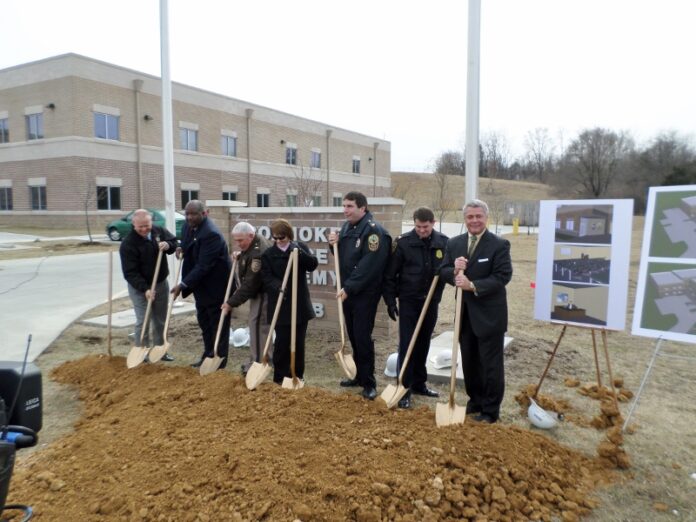
The unsettling events in Ferguson, Missouri – mainly the tension between a mostly-white police force and a predominately African-American public that was protesting the shooting death of teenager Michael Brown – has led the Roanoke City police department to initiate some dialogue with residents here, including a community meeting earlier this week.
Roanoke city’s police force does not exactly mirror the demographics – nine percent of the force is African-American, while the number was closer to thirty percent of Roanoke city’s population in the 2010 census.
That is better than the ratio in Ferguson, however, where reportedly just 3 of 53 officers were black in a city that is 67 percent African-American. Add to the mix police dressed in riot gear and sporting surplus military armament during mostly-peaceful protests against the Brown shooting – at least initially – and you have a recipe for disaster.
Roanoke City police Captain Rick Morrison, who once headed up the police training as the academy director, says they are cognizant of the demographics and strive to have a force closer to what Roanoke really looks like demographically.
That means, said Morrison, working to recruit black, Hispanic and Asian trainees and officers – and employing minority officers to recruit others. Morrison, an 18 year veteran, said it also means sending officers into parts of town, when feasible, who look like others in that part of the city.
Morrison said the department realized that “traditional” recruitment techniques might not be the best if they wanted a more representative workforce. Instead of just using a designated recruiter, throwing out “a big giant cast net,” at job fairs and colleges, they decided to take a different tack.
“We’ve got to be more reflective of our community,” said Morrison, noting that people from more than 100 ethnic backgrounds live here in the valley. (There are six Hispanic officers among the 253 on the force currently, said Morrison.)
The realization was that “we have to become more engaged with the community,” noted Morrison. “We found out that when we send a white officer into those [minority] neighborhoods that are very tightly knit … you’re not as receptive. Even though the relationship may be very positive …it’s just the cultures are very tight. Sometimes …they are very mistrustful of police – especially if you don’t look like them. It really comes down to relationships.”
That means minority officers may show up now at community meetings or neighborhood watch meetings, including the “Breakfast and Badges” sessions initiated by Chief Chris Perkins. Female officers have been sent to Hollins University, which is all female in its undergraduate population. Sending a woman who has risen through the ranks – to the Lt. level, for example, noted Morrison – also lets Hollins students know they can advance if law enforcement in Roanoke is a career option. “[We’re] looking for the immediate connections,” said Morrison.
Everyone – all officers – are recruiters now in effect, said Morrison. Part of the academy training regimen now includes a section on how to recruit, what equal opportunity laws to be cognizant of, etc. “Some things that you have to be careful of. Everybody should be out there recruiting.”
He calls it recruiting smarter – more strategically – without dropping the standards. For recruits who fail the initial written or physical tests, the department will offer help to those who still want to pursue a law enforcement career – the academy staff offers assistance with the goal of having them pass those tests eventually.
As for the nine percent ratio of African-American officers in the city, Morrison said the city is working to raise that number. An outside group working with Roanoke on reaccreditation has noted the effort to diversify, said Morrison. “Have we arrived there yet? Of course not. But we are making legitimate efforts to be that more reflective agency – and not just saying it.”
By Gene Marrano


